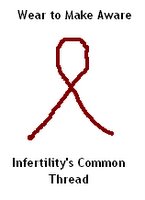Hi everyone,
I hope you all had a fantastic new year and are feeling optimistic about 2009. I am not going to do a review of 2008 or resolutions at this point as the little counter on the left tells me my blogoversary is coming up soon and I think I'll save it for then.
I'll start 2009 with a project I actually finished last year but it's taken me a while to get all the photos together. It's a simple project but I have done things a bit differently so I wanted to show you how I achieved my result.
The project is BWOF 07-2008-108 the tunic with an inverted pleat in the front. It's photographed in linen, but I chose a silk satin for my version. This is the second top to go with the flounce skirt I made recently.
The pattern is very simple - front and back, front and back yokes and side seam pockets (which I left off). After reading the reviews at Pattern Review I decided I would need an FBA. This is not an easy pattern to make this alteration on, so I made up a 'cheats' way to get extra room in the front.
When I traced the back pattern pieces, I used a straight 38 for the entire yoke and traced the back piece starting at 38 to the bottom of the armholes and then graded out to a 42 at the hips (the magazine photo looks very snug on the model's non-existent hips - it turns out it's not that bad!). For the front I traced a 38 on the shoulders of the yoke, graded out to a 42 at the bottom of the yoke and then traced a straight 42 for the front piece. This is not a fitted garment, I just needed room and this method worked pretty well.
No interfacing is called for - and wouldn't be needed in a cotton or linen - but I backed the yokes with silk organza.
I didn't follow the instructions at all. I completely made up my own way based on how it might be manufactured for RTW - I wanted to put this together without hand sewing (I enjoy hand sewing but sometimes like to challenge myself to pretend I'm a 'real' designer). That didn't quite happen but for a good reason, more on that later.
First I stay-stitched EVERYTHING - silk satin is really unstable! I stay-stitched the neck, armhole and bottom edges of the yoke facings, and the top edges of the front and back pieces. I also basted the silk organza to the facing pieces. Below you can see the back yoke with silk organza and the back yoke facing.

I constructed the side seams first. I used french seams but when I sewed the first line of stitches (the wrong sides together part) I stopped about 1cm below the armhole marking. For the second line of stitching I went all the way up to the marking and back stitched for security. I snipped into the seam where the first row ended and then turned a double hem around the armhole slit using up the 1.5cm seam allowance. It ends up looking a bit like a sleeve placket.

Next I sewed together the yoke shoulder seams, made the pleat in the front and joined the yoke to the rest of the top. This is a shaped seam and can be tricky but you have to keep in mind you are matching the stitching lines not the cut edges. Clip the curves to the stay-stitching and use quite a few pins to keep everything in place and remember that the yoke seam allowances will protrude at either end. For silk and fine fabrics I like to use glass-headed pins - they are pricey but worth it IMHO. As I sew I use a tip from a Sandra Betzina video I watched ages ago. Instead of maintaining the tension on the fabric in front and behind the machine foot as you normally would on a long straight seam, put both hands in front of the foot and massage with your fingers left and right. This manipulates the bias slightly and you'll find you can accommodate a fair amount of ease or curve this way. Try it on a scrap, this tip changed my sewing life!

Next time I'll go through a tutorial on how to face a sleeveless garment completely by machine, an industry technique I learned while working in the bridal studio, and show you the finished garment.





No comments:
Post a Comment